Learn the Lingo: Window Types
Welcome back. In this edition, we’ll review different window types and how they can dramatically affect the functionality and style of your home. Factors that may influence the type of window you select include how you want to view the world through your windows, the amount of ventilation you desire, your climate and accessibility to the windows. (If you missed our first installment, Basic Window Features, it may be helpful to review before reading below.)
Single Hung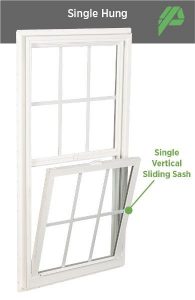
Equipped with one vertically sliding sash in a single frame supported by balances, single hung windows are the most common window type in the south and west regions of the United States. They allow ventilation from the bottom of the window unit. |
|
Double Hung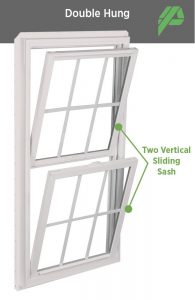
These windows come with two vertically sliding sash in a single frame, also supported by balances. Double hung windows allow flexibility in ventilation for hot or cool temperatures based on the ability to open high or low on the wall. Because both sash can be easily removed and later reassembled, leaving a large opening, these windows are ideal for rooms where it is difficult to bring large items through the doorway. Ease of cleaning is also an advantage of double hung windows. |
|
Sliding Windows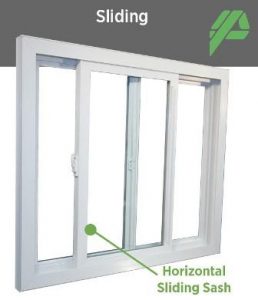
While this window that slides horizontally (in a single frame) can be used in any area of your home, they are especially helpful in rooms where opening a hung window would be a challenge, such as over the sink in a kitchen or tub/shower in a bathroom. |
|
Bay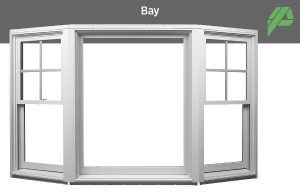
Bay windows are comprised of three or more windows, typically featuring a large center unit and two flanking units at 30° or 45° angles to the wall. Bay windows work in almost any room of the house. They can offer an alcove in a bedroom, living room or even breakfast nook. Similarly, bow windows serve a similar purpose but feature four or more window units in a radial formation. |
|
Casement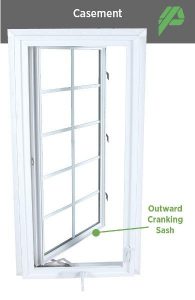
This hinged window style comes standard with a sash that cranks outward. Casement windows are vertical and crank to the left or right. They work great in bedrooms where there is furniture in front of the window and in kitchens where there is a sink or countertop in front of the window. Casement windows are excellent for ventilation in walls that have breezes blowing across them rather than directly in because the sash directs the breeze. Depending on whether you choose a left-opening or right-opening casement, windows can either catch the wind, bringing it into your home, or deflect the wind. |
|
Awning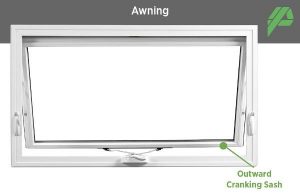
Like casements, these hinged windows come standard with a sash that cranks outward. Awning windows are horizontal and open outward from the bottom. They are great in partially underground basements, and as decorative accent windows in large window walls. They allow for ventilation in rainy climates because the sash shields the opening. |
|
Garden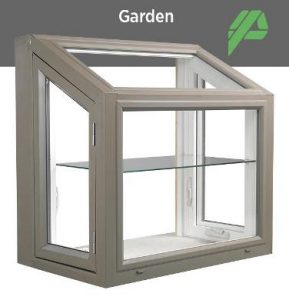
These three-dimensional windows extend outside, past the wall of the home — providing access to plants from inside your home. Sunlight streams through the glass windows on the top, front and sides to keep plants healthy. Some garden windows also include functional openings that allow fresh air to flow. |
|
Jalousie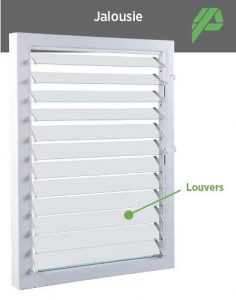
Jalousie windows are made of louvers set into a track that open with a crank to allow air in. These are warm-weather windows often seen on coastal sun porches and are great in breezy areas. |
Become a window expert—check back for more Learn the Lingo blogs in the future.
